|
By: Edward Farlington I first saw Prince Philip in ‘real life’ in 1970, during Cowes Week, when my family watched him coming ashore from the Britannia in the royal barge to fly up to London for the Queen Mother’s seventieth birthday celebrations. It seems almost incredible that, forty-two years on, he has, only days ago, been out on the water again in that very same craft. As I write, he is ensconced in the King Edward VII hospital recovering from an infection, but the most recent memory for all of us is of him marking time to the Sailors’ Hornpipe, wearing the full day-dress uniform of an Admiral of the Fleet. Prince Philip was born on 10th June 1921, on the isle of Corfu, son of Prince Andrew of Greece and Denmark and Princess Alice of Battenberg. However, shortly after the Greco-Turkish War (1919-22) his family was exiled and he was initially taken to live in a house in Saint-Cloud, on the outskirts of Paris. Eventually, he moved to England to live with his maternal grandmother, widow of Admiral Prince Louis of Battenberg (who, during WW1, had changed his name to Mountbatten). He was educated at an American school in Paris, Cheam Preparatory School in Berkshire, Schule Schloss Salem (founded by Kurt Hahn) for a short time in 1933 before Kurt Hahn established Gordonstoun School near Elgin in Scotland, to which Prince Philip transferred. Tragedy struck the family with undue frequency in the 1930s – Prince Philip’s mother was consigned to an asylum with schizophrenia; his father went to live in Monaco, so Philip effectively became an orphan. His sister Cecilie, her husband the Grand Duke of Hesse and their children were killed in an air crash in 1937; his uncle, George, Marquis of Milford Haven, (brother of Lord Louis Mountbatten) died in 1938 of cancer. However, with Lord Louis being his guardian, Prince Philip’s choice of career was not a surprise. For, from that time, things improved, and in 1939, aged 18, Prince Philip joined the Royal Navy and in that year first developed a bond with Princess Elizabeth, who he escorted around the Britannia Royal Naval College during a visit by the King. Soon after this encounter, he and Elizabeth started a correspondence that was to continue throughout the dark days of the war and culminate in their marriage in 1947, when the princess was just 21. Prince Philip, always a lively individual (described as ‘boisterous, but always polite’ by the head of his school in Paris), and a natural sportsman, was to make an ideal naval officer; he passed out of Dartmouth as top cadet in 1940 and served with distinction throughout the war, earning a Mention in Dispatches for his handling of the searchlights during the Battle of Cape Matapan whilst still a midshipman, aboard the battleship HMS Valiant. He achieved top grades in his promotion courses, soon becoming a sub-lieutenant and then lieutenant. When appointed 1st Lieutenant of the destroyer HMS Wallace in 1942, aged 21, he was one of the youngest seconds-in-command in the navy. In 1944 he was transferred to the destroyer HMS Whelp in the British Pacific Fleet, which was moored in Tokyo Bay at the surrender of Japan in 1945. Prince Philip continued to serve in the Royal Navy after the war, and in 1950 was promoted lieutenant-commander and, shortly before the Accession of Her Majesty the Queen, to commander. He also continued and indeed expanded his sporting interests, becoming a keen polo player, sailor, and (according to my late father) not a bad cricketer (indeed, my father recalled him playing on the beautiful ground at Arundel Castle with the Duke of Norfolk’s XI). The Accession of the Queen inevitably put paid to Prince Philip’s very promising career in the navy, but the commissioning in the mid-fifties of the new Royal Yacht, Britannia, enabled him to keep in close contact with matters nautical, and, indeed, he circled the globe in her, opening the 1956 Olympic Games in Melbourne and visiting Antarctica. He also developed a keen interest in sailing, resulting in the acquisition of the racing yacht Bloodhound built by Camper & Nicholson’s and of 1936 vintage, in 1962. He entered races frequently in the sixties and seventies during Cowes Week, and passed on his enthusiasm to his children, particularly Prince Charles and Princess Anne, who were with him on the day I saw him in 1970. I remember also his sailing instructor and friend, Uffa Fox, who was famously recorded giving a very ‘Hampshire’ rendering of ‘A Life on the Ocean Wave’. Riding has always been a passion of the Royal Family, and Prince Philip is no exception. Lord Mountbatten introduced him to polo in the 1940s, and he soon became an accomplished and serious player, his team Windsor Park winning the British Open tournament at Cowdray Park in 1957 and 1966. He continued to play until 1971, by which time Prince Charles had also become an accomplished player and a member of the team. Though he has continued to take an interest in the sport right up to the present day, injury to his wrist meant that after 1971 his equestrian interests, as an active participant, took a different path, and in 1973 he took up competitive carriage driving, and, although he gave up carriage racing as such a few years ago, even last Sunday he was out carriage driving at Windsor in the morning. Prince Philip is as one would expect a naval officer to be – straightforward, commanding and with antennae for hogwash, which means he is not very tolerant of banality, stupidity or sentimentality. His waspish sense of humour is, of course, world-renowned, his so-called ‘gaffes’ in the annals of royal folklore – only, of course, they were not gaffes at all, but rather good quips and wind-up lines. I like the one he reputedly said to the President of Nigeria: he remarked to the president, who was in full flowing robes, “You look as if you’re ready for bed.” He rarely remarks on political matters, but when he does, he is invariably right. Spot on on the subject of wind-farms, for example, which really are expensive white elephants, and on the late and very much lamented Royal Yacht Britannia, which, as he said, could have continued in service for years, but was axed for purely political reasons. Prince Philip has always been a popular ladies’ man – certainly, ladies I know who know him think he is attractive, and even today he has not lost his ability to charm. So it is not at all surprising that Princess Elizabeth, when aged thirteen in 1939, thought he was wonderful, In spite of some difficulties, soon resolved, particularly over the matter of the family surname in the 1950s, ever since Prince Philip promised to be the Queen’s ‘liege-man of life and limb’ at the Coronation in 1953, he has been an unstinting and utterly supportive Consort – in fact, the longest-lived male Consort in British history. The Queen has referred to him as a rock she can lean upon, her ever-constant support, and he was indeed very conspicuous by his absence during the third and fourth days of the Jubilee weekend, especially when the Service of Thanksgiving took place. Because Prince Philip has, in effect, always been around, there has been a tendency to take him for granted, and sometimes the more po-faced, or shall we say, self-righteous, elements of the media have castigated him for remarks which were only ever intended in jest. I think the people of this country have overtaken the media in accepting, and, indeed, admiring Prince Philip’s non-conformity to political correctness, and when, at the weekend, the huge crowd attending the Diamond Jubilee Concert were informed of his consignment to hospital, it was a measure of genuine affection for him that, not only was he cheered to the skies, but the people spontaneously chanted ‘Phi-lip, Phi-lip’. He is very understated about his achievements, which are many. Apart from his illustrious war service, he founded the Duke of Edinburgh’s Award Scheme with Kurt Hahn back in the fifties, which has helped and challenged many thousands of young people, he has been instrumental in the gradual ‘modernisation’ of the monarchy, is patron of many charities and other organisations, Chancellor of Cambridge University from 1976 to 2011, Colonel in Chief or Royal Colonel of many regiments, Captain-General of the Royal Marines, and most recently, Lord High Admiral. He has also been a very active patron of the World Wildlife Fund, founded in 1961. And, still, he carries out a remarkable schedule of engagements.
It remains for us to wish him both a speedy recovery, and a very Happy Birthday. Amidst the Queen’s Diamond Jubilee celebrations, D:BATE’s Event 02 will be on the topic of the Monarchy. Venue and speakers are all now confirmed and the ticketing is open (limited to 200 spaces). The two teams of speakers will debate on the following motion: ‘Great party but the Monarchy is expensive, unaccountable and irrelevant. Britain needs a democratic alternative’ Royalist or Republican, this promises to be a lively exchange of viewpoints and a stimulating evening all round. Confirmed speakers are as follows: FOR the motion:
Official flyer for the event (Below) A message from the new chairman Dear Members We are fortunate that the benefits of a Constitutional Monarch are apparent and that Monarchism is undoubtedly the majority position in the United Kingdom today. Independent research clearly shows a preference for the retention of the Monarch as the head of state and the membership of the British Monarchist League can thus be seen to represent the voice of what is otherwise a silent majority in the UK. Despite our strong position, there remains an extremely vocal minority in the UK who oppose vehemently our constitution and way of life. It is our responsibility to meet this thread of republicanism where we find it, and to expose their potentially seductive arguments as being rooted in flawed ideology and based on dishonest distortions of the truth. As the incoming chairman of the British Monarchist League it is both a pleasure and an honour to have the opportunity to continue this important campaign to give the British people the information they need to make an informed choice about their support of monarchism and to stand strongly and proudly against republicanism. This is a monarchy which benefits us all and enriches the nation and the Commonwealth. It does not exist to serve a minority. The Next Twelve Months I salute our outgoing chairman James Edgecombe for his initiative in setting up the BML in 2010 and thank him for all his hard work since, providing a solid platform for Monarchism and Monarchists alike. While I thoroughly intend to continue this work, there remains much to be done, and I hope to lead the vanguard in this respect. I believe the League has a great deal of potential to move forwards in both recruiting more members, and engaging differently with them too. By introducing a new category of contributing membership, we can generate the resources we need to advocate Monarchy in the public arena. As the league takes on an increasingly active role, it will be important for our membership to become more visible and ‘in the public eye’. To this end over the coming months the BML shop will open its digital doors and a range of merchandise, from the more formal staples such as lapel badges and brooches to informal classics like rugby shirts and hoodies will be available for purchase. Finally, another area in which I think the league has considerable room for expansion is the social side. I am glad that there are already plans afoot for a BML gathering on the Jubilee weekend – watch this space! In addition, to help engage members throughout the country in what is essentially quite a London-Centric organisation, I will be looking to recruit a number of Regional Vice-Chairmen over the next couple of months, who will be responsible for membership drives and social events in their geographical areas. If you feel you have the energy and drive to help Monarchy in your area, I hope you’ll want to volunteer your time. While you are for now my fellow members, I sincerely look forwards to greeting you as friends. Floreat Windsor and God Save the Queen. Oliver Lane Chairman British Monarchist League Dear members,
I sincerely want to thank you for the opportunity and chance you have given me over the last two years. It was a pleasure and honour to build the British Monarchist League into what it has become...so far. I feel it is important to mention that I have learned a lot during my time as Chairman. I founded the BML because I passionately believe in our greatest institution: The Monarchy. I hope the BML will continue to grow, with strength and honour, in this Diamond Jubilee year. I feel I have gone as far as I possibly can in my role; therefore, I am writing this letter to formally announce that I will be stepping down as Chairman. However, I will continue to work for the BML in the capacity of Managing Director. It has been a pleasure and honour to work as Chairman. I have found it a positive, challenging experience that I will never forget. I would also like to personally thank everyone who has contributed to the BML through their hard work and dedication. I will be replaced in my role as Chairman by Oliver Lane, who I have chosen for this role because of his clear vision to take the BML forward in a new direction. I invite you all to welcome him warmly in to his new role. He will address the league tomorrow. God Save The Queen! Regards, James Edgecombe Esq Managing Director & Founder British Monarchist League We are delighted to announce our newest Honorary Member, Hugo Vickers. Hugo is a respected writer and broadcaster, who has written biographies of many twentieth century figures, including the Queen Mother, Gladys, Duchess of Marlborough, Cecil Beaton, Vivien Leigh, a study of Greta Garbo, Alice, Princess Andrew of Greece, and his book, The Private World of The Duke and Duchess of Windsor was illustrated with pictures from their own collection. Mr Vickers's book, The Kiss - The Story of an Obsession won the 1996 Stern Silver Pen Award for Non-Fiction.
http://www.hugovickers.co.uk/ Written in honour of Her Majesty, the Queen's 60th anniversary of Her accession - ,6 February 2012. By: Thomas J. M. Mace-DeLacroix Mills Secretary General, British Monarchist League Long ago are the days of old, when débutantes were presented to the palace, social graces and manners were common place, deference towards the crown was high and the masses understood the saying “for Crown and country”. Much like society has drastically changed over the last 60 years, so has the life of an innocent little girl turned Queen, by the decision of one man who chose his feelings over his duty. As time has passed and many gone that remember the abdication crisis of 1936, it was this singular event in our history that has shaped the woman we know today as our Queen. Though born a Princess on 21, April 1926, Elizabeth's early years were as normal as could be. Being born royal of course would provide a comfortable life, but being born to the brother of the heir to the throne, would leave elizabeth out of the formal expectations and pressures that would accompany and be expected of those born directly to the heir apparent.
The formal duties and functions of State would not be of worry or even thought about by a person born into Elizabeth's position within her family. The first of her generation to be born (Granddaughter to King George V and niece to the heir to the throne), Elizabeth was not just a famous baby, but third in line to the throne at this time, as her Uncle David (The Prince of Wales) had not yet married or produced heirs of his own. As the years went by and little Elizabeth advanced in age, she enjoyed the comforts of a safe and secure family life, shielded from the public trappings and confines of a demanding public life. The odd sitting for a portrait or photograph popped up every now and again, but that was no different in those days as taking family photos are to us today. She continued to be known as the worlds most famous child as she grew, as still her Uncle had not married and no other children (besides Princess Margaret in 1930) of her generation were to be born to any other members of the immediate Royal family. Just a girl in 1936 when her Grandfather King George V died, it must have been difficult for a little ten year old to fully comprehend the decision that her uncle (King Edward VIII) made only a few short months later to abdicate his throne, which would ultimately and dramatically change her life as she was to know it. Moving from a modest London town-house and into the large rooms of Buckingham Palace would be overwhelming for any child, but the chaos she was thrust into was not to end, but to grow into a way of life that would define her character for her entire life to come. Losing more than just her childhood home, it was her family that would suffer the greatest change and eventual loss in the coming years. Though a favourite of her Grandparents King George V and Queen Mary, little elizabeth (known as lillibet to her family) was not exposed to the greater extent of Royal life, as her own small family was mostly removed from the high demand and public profile associated with royal duties. Elizabeth's father (Prince Albert, or Bertie to his family) suffered from a stammer, and it was her mother's reluctance to a royal life that contributed to the refusal of Prince Albert’s advances and several marriage proposals. Knowing what would be expected of her in a “Royal” marriage and life, Elizabeth Bowes-Lyon denied acceptance of the man she loved, however it was that same love that eventually saw the Duke's advances accepted, in which his last proposal succeeded. Elizabeth was comforted by the fact that the Duke's difficulties with public speaking kept him from a great expanse of public duty, and also knowing that his brother would become king, put her mind at ease knowing she would not have to endure the public spectacle of a demanding and expected life. Elizabeth was of Scottish aristocracy, however she was not royal. This did not prove an issue as she was the first non Royal to be accepted and eventually marry into the immediate Royal family. After their wedding the Duke and his new Duchess of York welcomed their first daughter Elizabeth, followed by another beautiful girl named Margaret four years later. The York Household enjoyed a happy time of low profile “royal” life within their small family, which was simply referred to as “us four” by Prince Albert, Duke of York. When duties were asked of the York's, it was often times the Duchess whom often had to step into the role on behalf of her husband, due to increased difficulties with his stammer that made the duties of public life for him both stressful and difficult. Though there were no major expectations from senior members of the Royal family or highly important public duties expected of the York family (with an exception now and again),it was little Elizabeth's uncle (and not her father) who was directly, and next in line to the throne. It was not until the passing of little Elizabeth's Grandfather (King George V) that things started to become more turbulent within the royal family itself, which would start to invade the confines of the safety and comfort of the York way of life. As Elizabeth's Uncle dangerously played with the monarchy's future and the love of a nation, it became increasingly apparent that the King cared little for his position, as he exerted little time or interest to what was expected of him. He did not take his new role seriously as he did not want to be King, though his destiny was to see him as such. Adamantly choosing private desire over public duty, Edward VIII instigated a rift within his family which would take decades to resolve, and an eternity to forgive. He was not seen as fit to reign, something that his father King George V knew. The King often discussed the irresponsible actions of his son David, which proved to him and the family, that the Prince of Wales was not fit for the heavy burden and duty associated with a stringent life as King, which was about to be proven to the world. With the abdication crisis unfolding, along with growing tensions on the continent, Queen Mary, the York family, and Palace courtiers saw the newly ascended King Edward VIII, frolic in a dangerous liaison with a twice divorced American woman, Mrs. Wallis Simpson. Foregoing his duty in favour of personal luxuries and comforts, along with his scandalous affair, the King set out to make Mrs. Simpson his wife, which was highly controversial and frowned upon by the establishment. It was simply unprecedented. This was not something that the nation would take to, nor would it be allowed in the eyes of the Church, in which he was “Defender of the Faith”. Knowing Mrs. Simpson had now filed for divorce, an ultimatum was presented to the King, in which he chose to relinquish his duties and abdicate his throne to be with the woman he loved. Once the instrument of abdication was signed and witnessed, it was Albert, the reluctant Duke of York who would now be styled, His Majesty King George VI. The pressures of being King and the duties of sovereign were now to fall upon the Duke of York, who was always in a delicate state of health from his time as a child. Never meant to be king, nor wanting to see himself or his family in this Royal role, King George VI knew that his life and that of his little daughters now belonged to the British people. As the former King (who was now addressed as the Duke of Windsor) went into a life of banishment from the royal court and family, so too went the care and worry free life of the little Princess Elizabeth. Days of playing with her sister, being read stories by her father and enjoying a worry free childhood, would soon be far and few in between as a new life of being groomed as the heir to the throne would take precedence. Issues of State would soon come to take over her home and her life, as she would grow into the duty she has come to display today. Her father was no longer solely hers, her sister's or her mother's, as not only he, but her entire family now belonged to not just the nation, but the Commonwealth too where duty trumped all else. The destiny that had been her father's would soon be realised by Princess Elizabeth, as special concessions would be made which would help keep Elizabeth closed off from a world outside of the Palace walls. Finding herself in a position very different from what she was used to, it was the abdication crisis which taught her the lessons of duty, honour and service which would ultimately become her trademark. Elizabeth would soon come to find that the destiny of her father would one day be hers too, as it would also be that of her own family and children in the years to come. Now King to his people at home and around the world, Elizabeth realised that her days of a quiet family upbringing were over, as the duties of State consumed her father the King and mother the Queen, which thrust her and her sister into the bright and very demanding public lime light. With the renouncement of duty, the discarding of the throne and a short stroke of a pen, King Edward VIII dramatically altered little Elizabeth's life by changing it a drastic 180 degrees. From a little girl at play forced into the direct responsibilities of State, Elizabeth and her sister were now two of the most famous girls in the world, where the public would always be watching. The Coronation of King George VI and Queen Elizabeth was attended by the Princesses Elizabeth and Margaret, which would prove a great experience for her own Coronation. She was being exposed in full to the meaning and way of Royal life, duty and protocol, something far removed from her previous Mayfair existence. However, the growing pressures of Royal life would eventually take its toll on her father the King. As the king grew in popularity as his reign advanced, the unity of “us four” did not waver. Still wanting to retain as much normalcy as possible for his little girls, the Palace went through great lengths to keep the little Princesses safe and protected, whilst offering them a very minimal taste of the opportunities of childhood outside of the palace. Trying to capture as much of a normal life as possible, Elizabeth and her sister joined the girl guides in which a troop was set up at Buckingham Palace for the little princesses to belong to. There were not a lot of children to play with at the Palace, therefore children and other girl guides from outside the palace were brought in to mingle with the princesses. Continuing to improve his stammer, the King seemingly took to the task of his duty as Monarch. He was able to reach out to his people through speech, in which his actions as leader of the nation would say more than his words ever could. As if life had not changed enough for little Elizabeth and her family, the dark clouds of war would soon start to expand from the continent as Nazi Germany would soon threaten our shores. During these uncertain years, it was a brief encounter in 1939 at Dartmouth Naval College which would see Elizabeth grow into her own as a young lady, as she became royally smitten with a young naval cadet by the name of Prince Philip of Greece, who adopted the last name of his uncle Mountbatten when he became a naturalised British subject. However the simple innocence of young love was to be overshadowed as the situation in Europe intensified. War was now inevitable , and so started the preparations for battle. London's children were sent to the safety of the country, which also included Princess Elizabeth and her sister Princess Margaret, whom were evacuated to the safety of Windsor Castle (which was simply referred to as a “house in the country”). Their parents, the King and Queen remained in residence at Buckingham Palace as a show of solidarity with their people. As London was heavily bombed, Buckingham Palace itself was bombed no less than seven times, in which Nazi bombs destroyed the Palace Chapel in 1940. Another bomb was dropped in the quadrangle whilst the King and Queen were in residence. Narrowly escaping, Their Majesties emerged from the broken Palace to shattered Glass from blown in windows and debris from the bombs explosions. As the King and Queen were filmed surveying the damage of their home, Her Majesty made a statement that was to become one of her most famous: “I am glad we have been bombed. Now I can look the East End in the face”. Now that the Palace had endured such bombing as the other parts of London had during the war, Their Majesties were able to truly relate to and feel the pain of their subjects. Truly revered by the people for staying at the Palace and not abandoning the city of London for the safety of a secluded country estate, The King and Queen were seen to be sharing in the peoples hardship and pain as reported by The Sunday Graphic on 18, September 1939 (Page 1): “By the Editor: The King and Queen have endured the ordeal which has come to their subjects. For the second time a German bomber has tried to bring death and destruction to the home of Their Majesties...When this war is over the common danger which King George and Queen Elizabeth have shared with their people will be a cherished memory and an inspiration through the years.” Being amongst the masses and sharing in their grief, endeared the King and Queen to their people. The Princesses spent much of the War at Windsor, however they were still shown in their State capacity as making war time speeches to the children of the nation, and upon Princess Elizabeth's 16th Birthday she was inspecting her own regiment of Grenadier Guards in which she was Colonel. In support of the war effort, it was Princess Elizabeth who was to set an example by joining the war effort by training as a mechanic in the ATS. Here, she learned to drive and maintain various types of motor vehicles, including those used for war. The Princess was often found working in overalls on the engines of Red Cross motor cars, such as when her father the King came to visit her and observe whilst she was performing her duties. It was a few more years of uncertainty before Prime Minister Winston Churchill proclaimed and end to the war. It was on this day that he joined the King and the Royal family on the balcony of Buckingham Palace to the delight and cheers of the crowds that had gathered to celebrate the victory over Nazi Germany. As the celebrations of the day carried through into the night, the two little Princesses in disguise escaped the palace to join the throngs of people, so they could for once in their lives enjoy a few hours of being a normal everyday person. Though the war had come to an end and Britain could start rebuilding, it was six years of war stress and pressure that took its toll on the fragile health of our King. Such effects on His Majesty’s mind and body left him significantly weaker, but his belief in duty to his nation along with his strong will continued to see his reign successful. After the war Prince Philip of Greece and Princess Elizabeth were seen together more frequently in society. Little was it known that during her time at Windsor Castle, the Princess had kept a photograph of Prince Philip with her. As they communicated, their liaisons became more and more frequent and a royal love affair blossomed. 1947 saw the first Royal tour taken with the entire Royal family, in which the Princesses were off to enjoy the sights and experiences of South Africa. Official duties were the priority of the King and Queen, but for Princess Elizabeth this tour would also mark her 21st Birthday in which she made one of her most famous speeches to the commonwealth of nations. Taking time out from touring and safari, Princess Elizabeth took to the airwaves proclaiming: “I declare before you all that my whole life whether it be long or short shall be devoted to your service and the service of our great imperial family to which we all belong. But I shall not have strength to carry out this resolution alone unless you join in it with me, as I now invite you to do: I know that your support will be unfailingly given. God help me to make good my vow, and God bless all of you who are willing to share in it”. Now bound by duty for her entire life, the Princess was acting on the lessons in which she had witnessed and was taught from childhood: duty first, self second. As Britain and the Commonwealth revelled in the Princesses Birthday speech, her homecoming would be made even happier as the announcement of her wedding engagement to Prince Philip was announced. It was later in the year that the 20th of November 1947 saw the largest and most popular celebrations in Britain for decades. This union and this Royal Wedding was what the nation needed. It was a light emerging from the darkness of a war ravaged Britain, in which years of gloom and despair seemed to disappear as Princess Elizabeth and her new husband were the symbols of renewed hope, prosperity and continuity. They were described as a perfect couple in the eyes of the British media and their adoring public. After her wedding Princess Elizabeth happily agreed to take on more official duties to help lighten the load on her father's diary. As the King continued to become more feeble and his work load dispersed more heavily in his heir's direction, his failing health was masked and kept from the public. Knowing that his daughter needed time with her new husband, the King offered Prince Philip a Naval command in Malta where Princess Elizabeth would join him not as heir to the throne, but as a simple navy wife. It was in 1948 that the Princess gave birth to her first child, Prince Charles, and so began the happy days of the young family. However the family life that Princess Elizabeth was starting would not be what she herself had as a baby. The Princess was heir to the throne in which she herself would have to protect and shield her family from the glare of the media and the public. There was no way around the duty to which she was bound, therefore it was her children whom would often play second fiddle to the demands of State. Prince Philip began to reduce his role in the navy to take on more public duties with his wife on the King's behalf. He was very adamant about helping others, and it was obvious that he could relate to people of all stations and make them comfortable in his presence. The royal couple were often away from home on official duty and so it was to be again with an official visit to Canada in 1949 before Princess Anne was born in 1950. As the royal couple now had two children, less time was actually allotted to be at home with them as the duties of State increased. 1952 saw a planned overseas Commonwealth tour for the King and Queen, in which the Royal diary saw a most gruelling schedule. It was due to the fragile health of the King that Princess Elizabeth and Prince Philip agreed to embark on this tour to represent their majesties abroad. As the departure day arrived, King George VI, Queen Elizabeth and Princess Margaret saw Princess Elizabeth and her husband off from the tarmac at Heathrow. This was not just a farewell until the Princess' return, it was to be a final goodbye from a father to his daughter. The King sent a Princess of the realm to represent him to the people of the Commonwealth, knowing that she would return a Queen. Whilst on her tour in Kenya, on 6 February 1952, the Princess received the heart wrenching news that His Majesty the King had died peacefully in his sleep, in which she would immediately return home as Queen to her people. It was here in Kenya that she decided to be addressed by her own name, thus styled Queen Elizabeth II. Upon her return to London, Winston Churchill along with several Privy Councillors met the new Queen at Heathrow, where she famously exclaimed at the sight of them “Oh, they have sent the hearses”. As there was no time for her to grieve on her own as the daughter of a loved father, the new Queen's first official duty was to lead her great nation in mourning for her father the late King George VI at his funeral. King George VI was greatly admired, loved and endeared to his people for his bravery and steadfast war time attitude. His funeral was attended by his brother the Duke of Windsor, but not his sister in law the Duchess as she was not welcome. The Duke was never forgiven by Her Majesty the Queen Mother, as it was seen that the abdication which thrust the Duke of York to the forefront of duty as the reluctant King George VI, had indeed cost him his life in which he was taken much to early from her, his family and now his people. Queen Elizabeth II watched the job her father never wanted send him to an untimely death, but it was his spirit and sense of duty that was impressed on the young and dutiful Queen. The event of the King's passing had a profound affect upon the new Queen and her family, as Prince Philip left his aspiring and successful naval career, to work along side his wife the Queen as her support and consort. The summer of 1953 saw a coronation of unparalleled excitement and celebration come over London, as the glamour and youth of our new queen was attractive to the nation, where London itself was again young, lively and full of hope. The death of Queen Mary in the start of the year, signified the passing of the old guard, in which a new age and style of monarchy would emerge to truly reflect Britain. Change was occurring and renewed hope was already high in spirit as the Queen agreed for television cameras to be granted access to the Coronation ceremony, which would allow millions of her new subjects to bare witness to her crowning. This was a clean break from what the old guard would have decided, which was to keep the television cameras out of the ceremony altogether. The ceremony itself was of tremendous pomp, glamour and spectacle, which saw Prince Philip brought to pledge his allegiance to his wife as his God anointed Queen as her liege man of life and limb. The coronation of such a young, energetic and lively Queen was a changing moment in our history, which ensured that change was welcomed and was going to happen within this new Elizabethan era. In the months to come, Her Majesty along with Prince Philip would embark on a six month long tour which was designed to help save the Commonwealth by bolstering support for the institution of monarchy whilst using the popularity of the new Queen and her husband to do so. This tour helped create the Commonwealth as we know it today, but not before the christening of the Royal Yacht Britannia was completed, in which it would serve the Queen for over 40+ years before being decommissioned by Tony Blair's Labour government in 1997. This Coronation tour saw the Queen cover over 50K miles to far away realms and back, where she would bare witness to a variety of cultures and languages which comprised the vast complexity of her overseas realms. Upon her visit to New Zealand, she opened parliament for the first time in her reign, in which this historic visit was the first time a reigning monarch had presided over such a session there. As the Queen returned home to vast cheering throngs of her subjects, she was greeted by none other than the Queen Mother, her sister Princess Margaret and her Prime Minister Winston Churchill aboard Britannia. As she was driven by horse and coach through the cheering city streets of London to lunch and then home to Buckingham Palace, the rest is royal history. Her Majesty may be constant, but sure and steady is something of a controversial and contrary statement. The Queen is the only monarch in the history of Britain to instigate and complete such radical change over such long periods of time within an institution that some continue to perceive and promote as archaic and useless in today's modern world. In 1952, Her Majesty came to head an institution unchanged since the days of King Edward VII, which was very stiff and regulated by unwavering tradition with an almost arrogant aloofness. As a new Queen for a new time came to see a changed world since the end of WWII, Her Majesty has ushered out old, stuffy court traditions, and has breathed new life into what many call “the establishment”. It is the Queen who has welcomed change to her public life during the last 60 years and has not only changed herself, but the institution of the crown itself which defines us as a people. Her Majesty serves as an example to the nation, as she has found a way over the last several decades to intertwine both her official and formal roles with her informal and candid experiences, to become a true symbol and reflection of Britain in the 21st century. She has strived to change the Monarchy for the better, making it adaptable and truly reflective of a modern and constantly changing Britain. She is the personification of the State in all it's glory. Truly a symbol of the might and majesty of our past, present and future as a nation. It has been decades of domestic and international experience, service and duty which has endeared her to the people of not only our realm, but the realms and dominions overseas, which treasure and value her in many of the same ways we do here at home. In the beginning of her reign, duty and dedication superseded everything, even her own family. However after much practice as a Princess and phenomenal experience as sovereign, the hardships she endured and crisis she triumphed over, has seen her single handedly reformulate the equation of duty and service within the growing informality of the modern world. During her reign the monarchy has seen its ups and downs, and it has been the Queen who has tightened the reigns and welcomed the change which would ultimately direct the crown to be the open and transparent institution we know and love. The Queen has triumphed over turmoil, loss, and tides of republicanism during each decade of the last 60 years, as it was in the 1990's that Her Majesty faced the most trying and troubling times of her reign. Describing 1992 as her “Annus Horribilis”, Her Majesty witnessed the break down of two of her own children's marriages which were shrouded in scandal, and a fire which gutted much of her childhood home to name a few downs of the decade. She embraced the truths of both faltering marriages and made the difficult decisions to see both of Prince Charles' and Prince Andrew's marriages dissolved. As Windsor Castle was uninsured, Her Majesty faced public scrutiny over taxpayers footing the bill to repair the Castle. She made the hefty decision to open the Castle as well as Buckingham Palace to the public in order to raise the funds to repair the rooms which were devastated by the fire, as well as pay a vast sum towards the repairs out of her own private funds. 1992 was not a year that the Queen would look upon favourably, as little was she to know that this decade of her reign was to see more trying times for the House of Windsor. As no one knows the British people better than Her Majesty, the turning point of her reign which saw the greatest amount of change to the formal portrayal of the crown, was the death of Princess Diana. Though she may hold many important titles and honours which are celebrated and revered, 1997 was a year that saw large throngs of people care little for formality and duty, whilst demanding more “feeling” and “spectacle” from the establishment and Her Majesty the Queen. As the saga of the death of Princess Diana was quickly spread by the media, Her Majesty did not stand a chance against the onslaught of public grief and anger that was driven like wildfire from the very outlet that helped create, and ultimately destroy the Princess of Wales. As the nation has always rallied around the Queen in both good times and bad, this particular event saw the Queen used as a scapegoat for the grief, sense of loss, and pain in which many transformed into anger and raw emotion which they directed not only towards the institution, but the Queen herself. Not understanding this sensational change in her people, Her Majesty could not get her head around the changes which were offered by Her government, which would in fact help ease the public's fury and emotional charge. Traditions that have been with the crown for centuries were now facing extreme change, which was something the Queen had to face. She did what she had to do, and yielded against her judgement to keep the integrity of the crown intact and stable for the future of the nation. Her Majesty saw a flag at half-mast over the palace which has never been done before, her summer holiday tending to her grieving grandchildren cut short to be with her people in London, and a televised tribute to Diana which culminated in a bow to her coffin on the day of her funeral as the cortège passed the palace. Now leading her people through their grief, Her Majesty was able to overcome this seemingly desperate time of troubled popularity. Changing in the ways that best suited the people and the establishment, was something that the Queen had to do to further protect the institution that supersedes even her authority. Again her sense of duty prevailed and all was made right with her people. Her Majesty had shown not just the nation, but the world in whole that she is in fact changeable with the times. Her Majesty is not the staunch, resistant to change, out of touch monarch she has been painted to be by certain organisations. In fact, it is Her Majesty who has initiated the greatest amount if change within the establishment, in order to be closer to her people, and more in tune with the modern thoughts and beliefs of how government is handled and operated. From the archaic institution she inherited, has come the efficient, open, and “feeling” monarchy that people have come to cherish and need. Somewhere along the last 60 years of her reign, the public transition from ideology and example, to feelings and emotions seemed to have caught the Queen off guard, as this was exemplified during the late summer days of 1997. Since the seemingly dark days of the 1990's, the Queen has enjoyed a large period of increasing popularity. Events such as the millennium celebrations, her Golden Jubilee celebrations along with Royal tours, as well as the many Royal weddings that have taken place, have put Her Majesty at the top of her game. The crown and more importantly Her Majesty in particular, is more popular now than she has ever been. She is a revered Stateswoman with a very important title, but behind all of that is just a woman who has made do with what life has given her. She is kind and generous, who is able to relate to her people no matter their station in life. She is a loved and loving member of her family, who has openly been seen laughing and crying, as well as joking in public and in private. She has taken an official role and made it less stuffy and “stiff upper lipped”, whilst showing the world that she too is a woman of feelings and warm heartedness. Most importantly after 60 years, Her Majesty is a living national treasure unto herself, and a fitting example as to what and who we are as a people. There may have been times of indifference to the crown and the Queen, but the last few years have seen that change, as a growing wave of younger generations are endearing the Queen to their hearts. Again there is deference to the crown and this institution which has changed greatly over the last 60 years, which has again brought renewed popularity to our people, our culture, and the traditions which have identified our islands to the outside world. With the rise in the popularity of the crown and the Queen in particular, has emerged the pro-monarchy and pro-education organisations which see their duty to defend, protect and promote the integrity of the crown at home and around the world. Such groups as the British Monarchist League and Defenders of the Crown here at home, as well as similar organisations across the seas in Her Majesty's realms of Canada (Monarchist League of Canada), Australia (Australians for Constitutional Monarchy and the Australian Monarchist League) , New Zealand (Monarchy New Zealand), the Caribbean (the Caribbean Monarchist League) and Jamaica (Jamaica Monarchist League), have vowed to continue educating the people about monarchy, its role and its relevance in the modern world. Along with dedication to the crown of such organisations, they have also vowed to rise up and defend the crown against the offencive and destructive assault of the republican movement. It is not only the education of the crown and its role which will see the lasting existence of this great institution, it is the ways in which the establishment is able to change to meet the needs and desires of the people that will see it endure the decades and centuries to come. As Her Majesty has been at the helm of great change in a seemingly unforgiving world, we are approving, grateful, respectful and loving of the woman who has pledged her entire life to our service. She has reigned brilliantly over the years with our best interests in mind and heart, whilst representing us without a blemish to a world that still emulates and looks to the United Kingdom in many different aspects of modern life. It is not with just the support of her Husband and family that see her successful in her duties, but the support of her people at home and across the seas that love, revere and respect her. As politicians have come and gone and the times have changed with each passing decade, it is Her Majesty who has harnessed and implemented the many changes which have endeared the institution of monarchy to us the people. From an innocent and protected little Princess, rose and evolved a Stateswoman of stature that braved the perils of family battle, the evils of war, the death of her loved ones and the many events which tried her patience and faith during the last 60 years of her reign. It has been this new Elizabethan age which has seen the fabric of British society tested and tried, whilst great change has been implemented for the betterment of Her people. Looking back on a job that was never meant to be hers, it can truly be said that Elizabeth II has triumphed in every way over the many hurdles and obstacles that have been placed in her way. From tiara to Imperial State Crown, it is with great pride and respect that we recognise the efforts of this magnificent woman who evolved from Princess to Queen. Download your very own British Monarchist League wallpaper at the link below. Click 'Download File' then right-click, select 'Save image as...', open the file and right-click and select 'Set as desktop background'.
The new British Monarchist League logo depicts a lion passant wearing a variation of St Edward's Crown.
|
BML News
All the latest News updates, Blogs and Press Releases from the British Monarchist League. Categories |
||||||
British Monarchist League 2023.

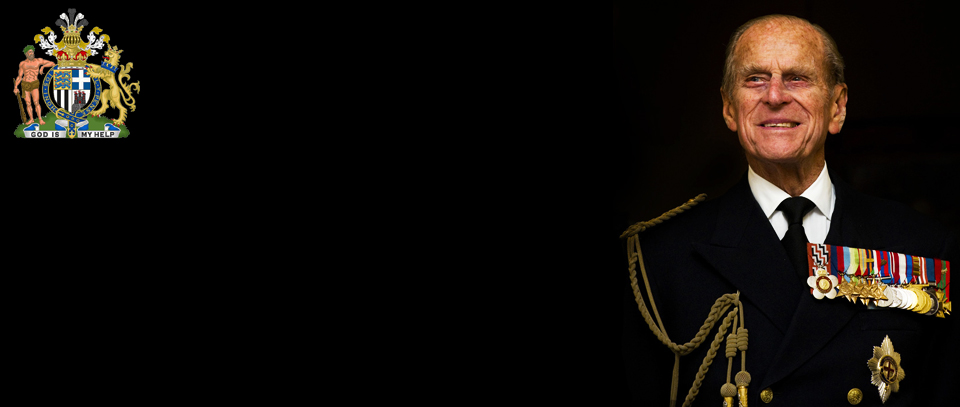
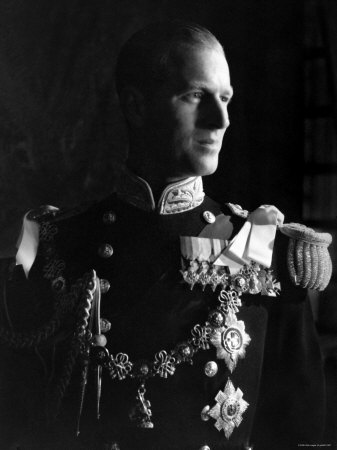
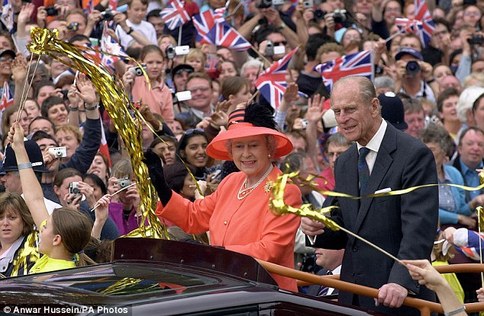
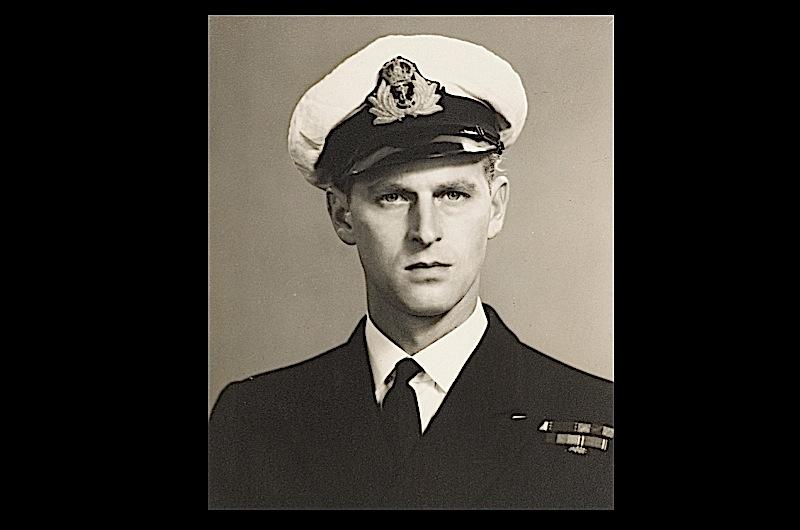
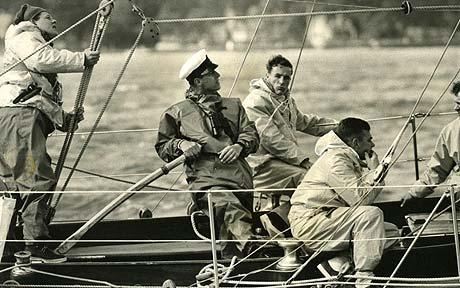
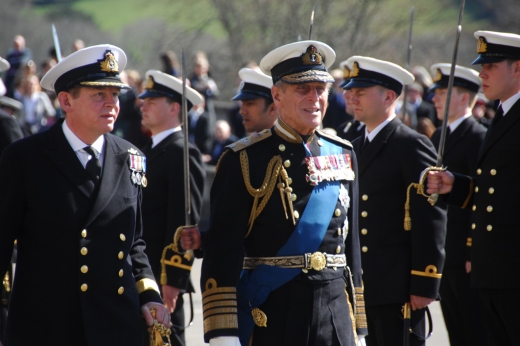
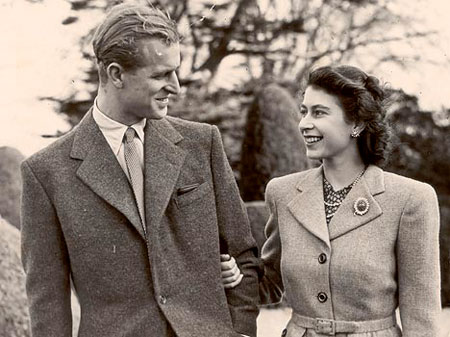
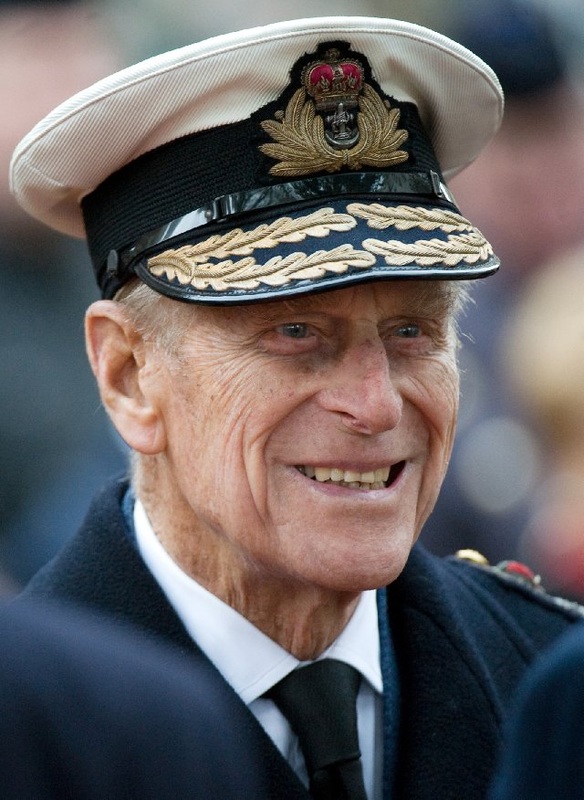
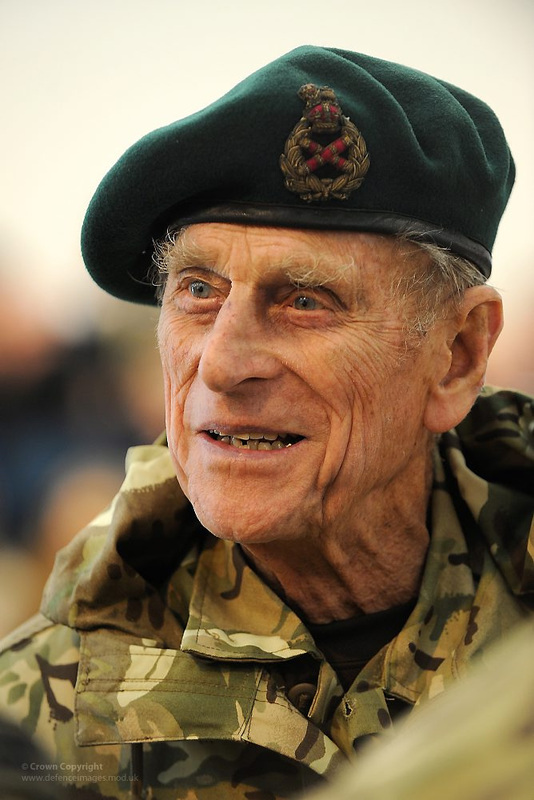
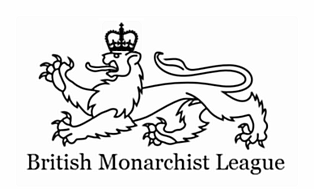
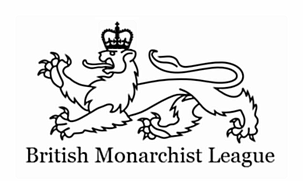
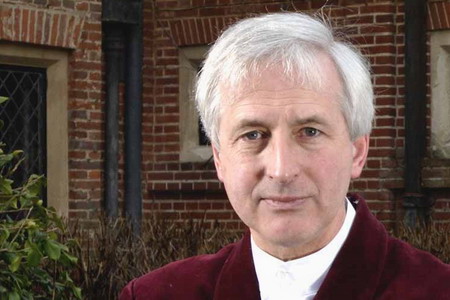
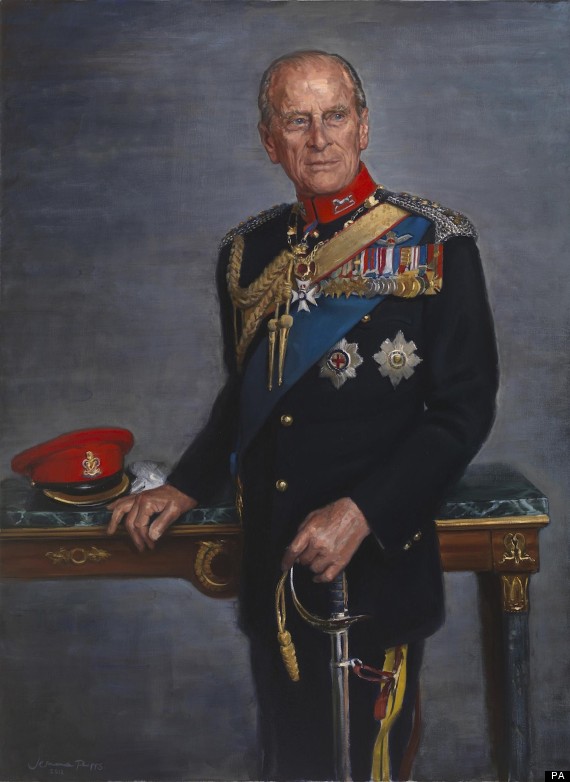
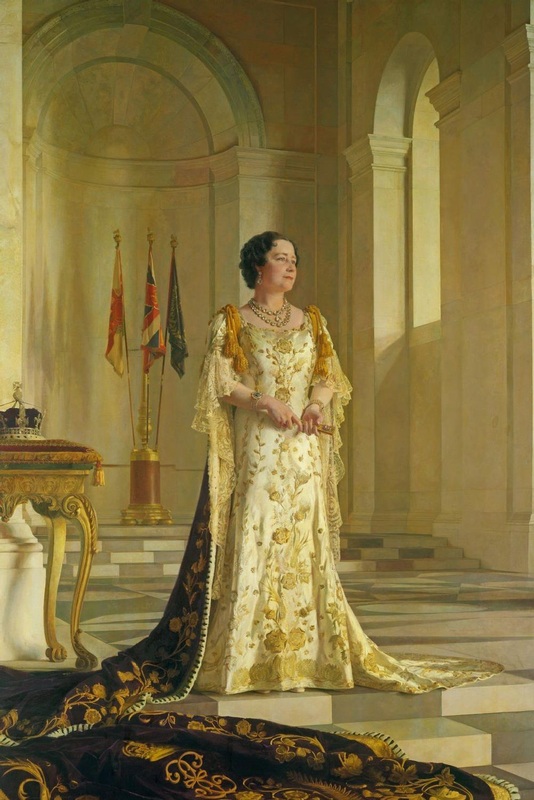
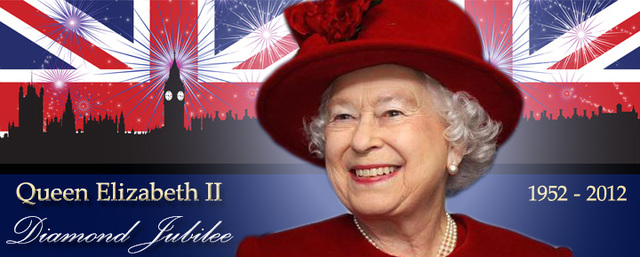
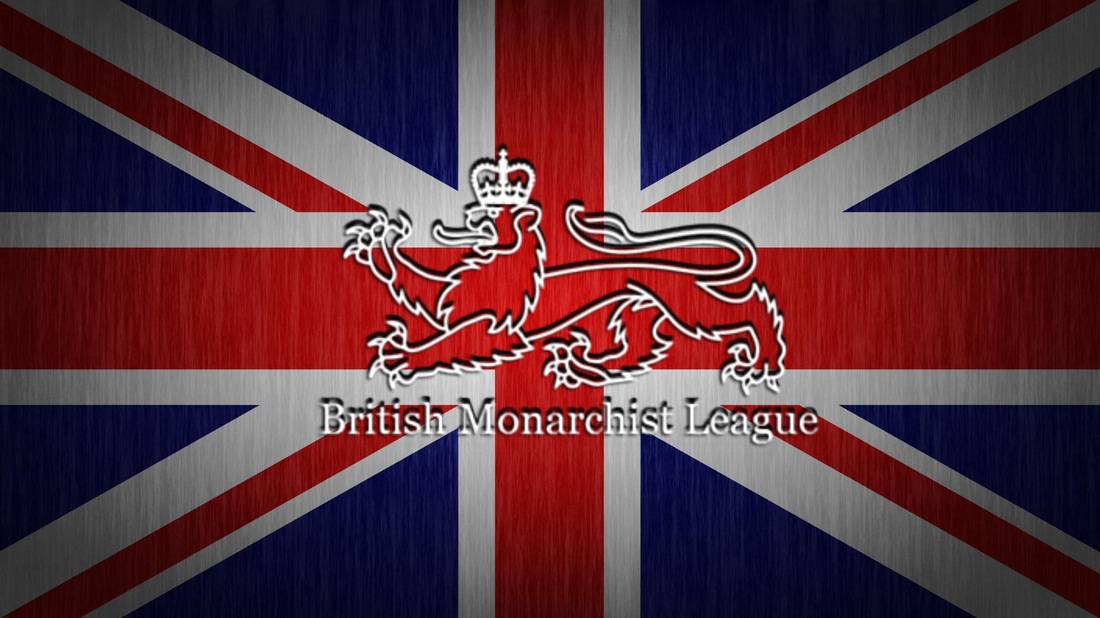
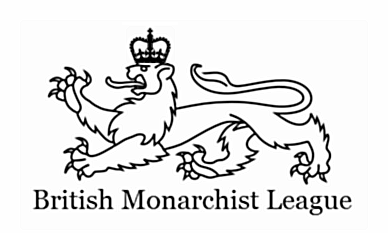
 RSS Feed
RSS Feed